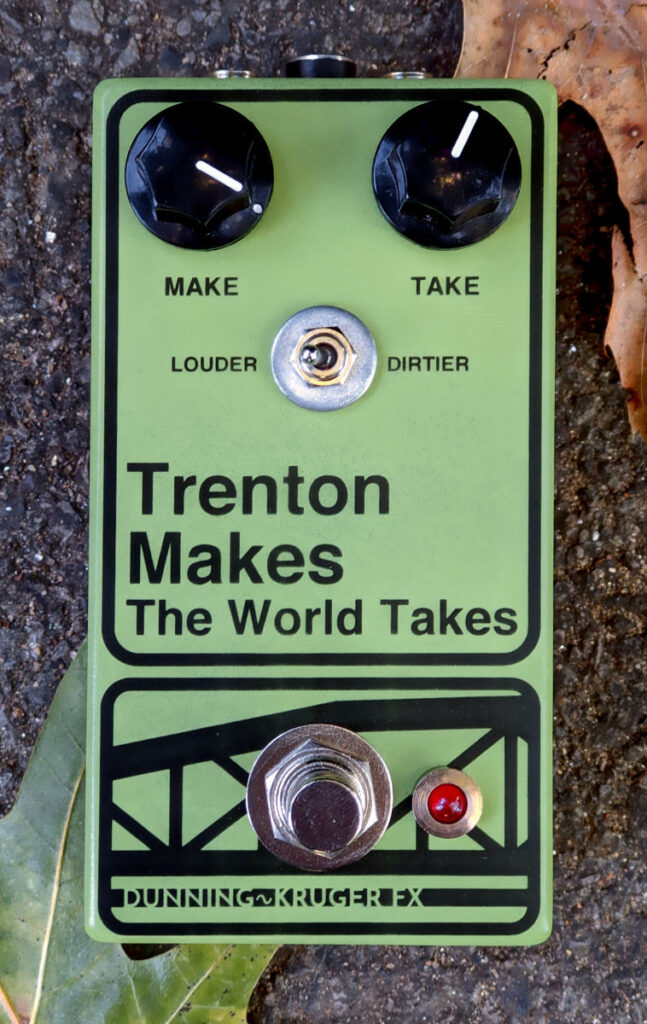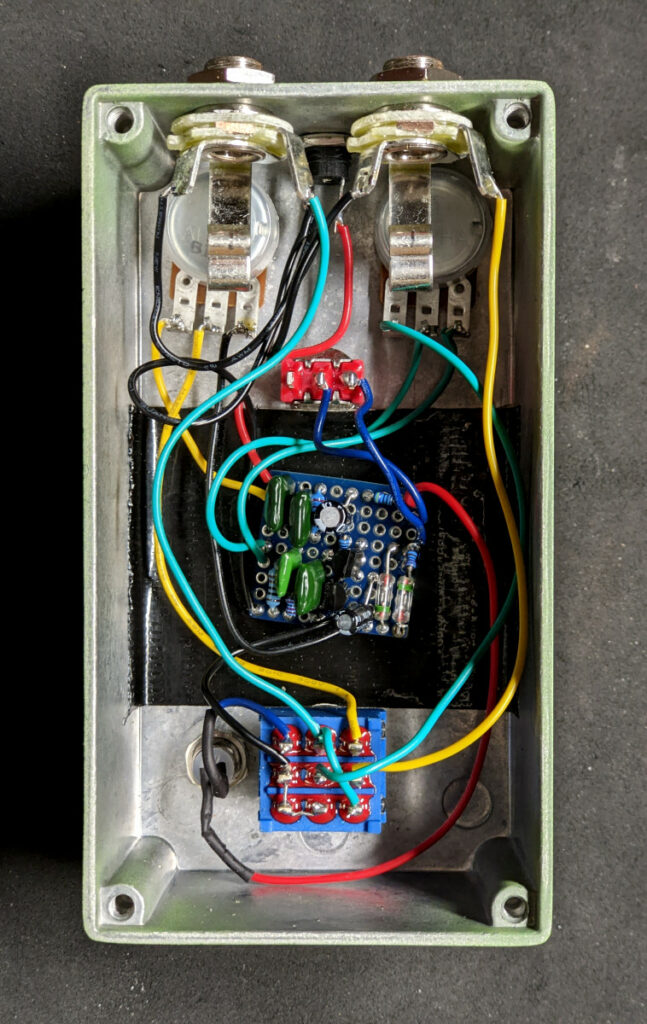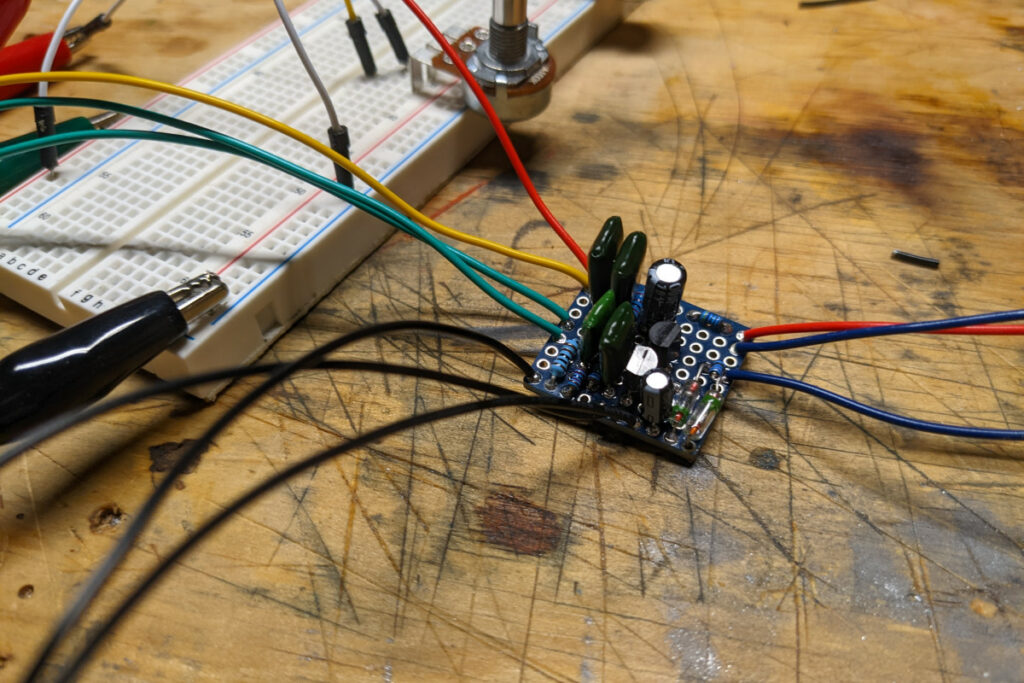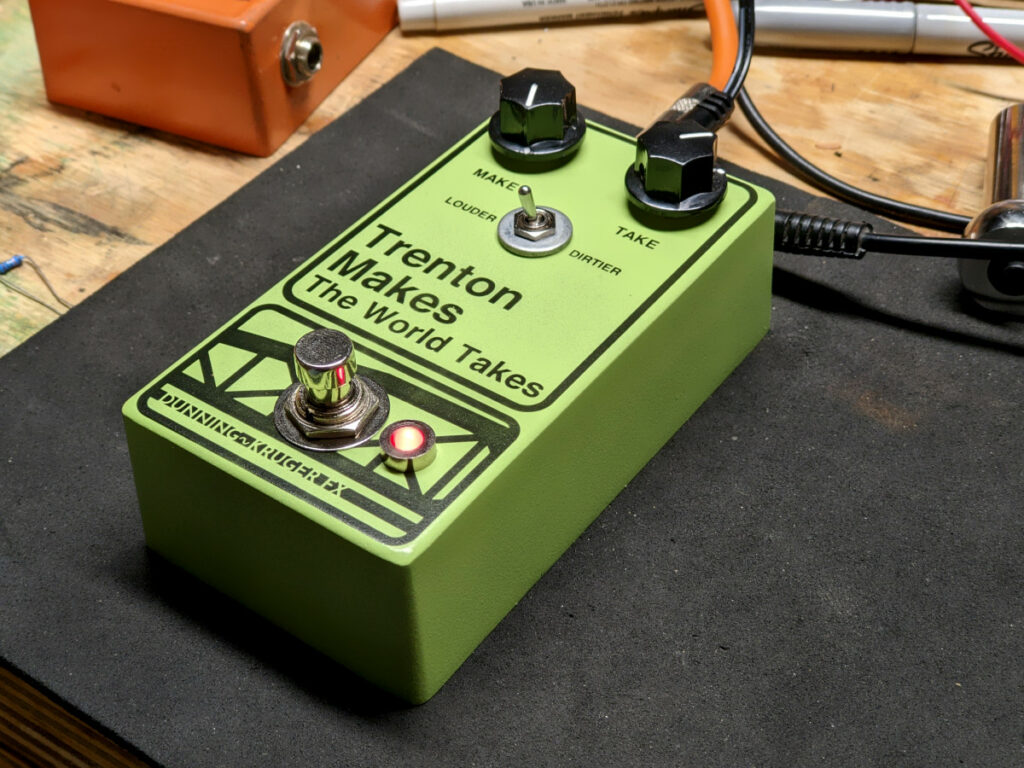

The World Takes
“It’s so true.”
Is it? The phrase “Trenton Makes – The World Takes” is written in illuminated letters 10 feet tall on the side of the Lower Trenton Bridge. Ask an old-timer from the greater Trenton/Morrisville metropolitan area about this bridge’s sentiment, and most will instinctively glance off to an unseeable horizon and wistfully agree with its bizarre pathos. I’m not sure that I even know what it means.
I can overlook the fact that there isn’t that much industry in Trenton (or any of the old east coast cities) anymore. The slogan is from 1910, and although the clauses were originally reversed, I can accept that the “making” part was applicable at the time. It’s the “taking” that gets me. I’m pretty sure that the nations of the world weren’t constantly ransacking the city and running off with all of their steel and toilets. Whatever Trenton was making, they were selling. The profits may have gravitated to the pockets of a few guys who looked like obese Mr. Peanuts, but that wasn’t the “world taking,” and given that the motto was suggested by S. Roy Heath of Health Lumber, an owner of the means of production, I doubt that it had anything to do with the plight of the proletariat.
Regardless of what it means, it’s such a downer of a slogan. A resignation to Sisyphean toil with a dash of errant poignancy, literally writ large. I don’t get it. But I’m glad it’s there.
And of course, it is exactly this type of earnestly-executed nonsense that inspires Dunning∿Kruger Effects. Historian Paul Fussell called “Trenton Makes – The World Takes” an “idiomatic disaster,” and the pedal of the same name attempts to be a congruent auditory disaster using transistors.
Details
Legend has it that there was a pedal in the 70s called the InterFax HP-1 Harmonic Percolator, made by Ed Giese in Milwaukee, WI. It was a fuzz pedal in a beige case with an unusual configuration of a silicon NPN transistor and a germanium PNP transistor that supposedly emphasized only even-order harmonics. They’re pretty rare, but at some point Steve Albini said that he liked them, and that put them on perpetual rotation in the Holy Grail of the Month Club.
In the 21st century, Tim Escobedo published his own take on it: the Harmonic Jerkulator. He did away with the germanium but still used both NPN and PNP transistors. He also got rid of the clipping diodes on the output and substituted parts that were commonly available at the time. It’s impossible to say if he was even working from the correct Percolator schematics—the purists say that most of the ones floating around aren’t—but I don’t think he cared. I certainly don’t care. I’ve built a bunch of Escobedo designs (Toynbee, Laser Hoagie, Synth Stick) and he’s always good for something weird and not too difficult to build, so thought I’d give this one a try.
Trenton Makes is basically a Harmonic Jerkulator as-designed, although I did substitute a couple parts for what I had on hand…probably within the tolerance of the suggested values. I also put the clipping diodes back in, but on a switch so that they can be added or removed as desired. I’ve had mixed success with clipping diodes on old-school transistor fuzzes. I initially thought that maybe it was impossible for them to have an audible impact, but they worked in my Fuzzy Bunny Fuzzing Fuzz, and since they were allegedly in the Harmonic Percolator, I thought they might work here. I used the same germanium weirdos that I had left over from Fuzzy Bunny, and they definitely squish the signal quite a bit in an obvious way.
The “Makes” knob is what would be called the Harmonics knob on an actual Percolator, which would be called Fuzz or Gain or something on a normal pedal, and in this circuit is actually just flavored attenuation before gain. The “Takes” knob is what would be called Balance, and attenuates the level of the output. The switch is either on “Louder” (clipping diodes bypassed) or “Dirtier” (clipping diodes engaged).
Vital Stats
Sound
It will get pretty raunchy, although it’s also interesting when it’s not running wide-open, either by turning down the “Make” knob or with the guitar’s volume control. I greatly enjoyed the clipping diodes when I was breadboarding it (which is why I added them) but in practice, I might like it better without them. Such are the tribulations of testing on a shop amp with a 3″ speaker. It has a wide range of available sounds, and at any gain level, a unique character among my fuzzes.
The following sound clip is in three sections. All are the Junior into a DI.
- Part 1: No diodes, cranked
- Part 2: No diodes, dialed way back
- Part 3: Clipping diodes engaged, cranked





I am researching and looking for a Percolator
Trenton Makes is in the Harmonic Percolator family, but more of a Harmonic Jerkulator.